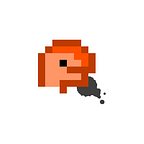“Norse Mythology" by Neil Gaiman: Thoughts and Observations
And also an attempt at trying to get you to pick this book up.
As a child, I came across Greek mythology and quite naturally, Roman mythology too, as they tend to be closely associated. I had assumed, back then, that the only myths that one would find in Europe are the Greek (and Roman) and the Christian/Biblical ones. I came across characters in from Norse myths, here and there, much later in my life, not knowing that the Scandinavian mythology also had a full fledged list of gods and narratives that involved them and other creatures that are part of the many different realms. It was only last year that I came across Neil Gaiman, and his love for myths, and especially Norse myths. And it is around the same time that my obsession with all things Gaiman began. So naturally, I wanted to know what brought about Gaiman’s love for the Scandinavian tales of gods and creatures, and his book, Norse Mythology seemed to be the best place to begin.
The major texts in Norse mythology have been the Poetic Edda, as well as the Prose Edda which came later. There have been retellings that used the aforementioned as source materials, like Roger Lancelyn Green’s Myths of the Norsemen and there have also been many creative takes on the mythology, the most popular, being Marvel’s “The Mighty Thor” series of comic books, both of which, have been inspirations for Gaiman’s book. Norse Mythology by Neil Gaiman differs from the books that it has been inspired by in the way that it is a little bit of both. Norse Mythology runs like a retelling for the most part, as Gaiman tells selected stories from both, the Prose Edda and the Poetic Edda, but he does so in a manner that reflects his own self in it; he personalises his stories with what I like to call the ‘Gaiman Touch’. When one reads these stories, individually, as separate parts of the book, they will still be able to see the essence of the author in them. In fact, in the introduction to the book, Neil Gaiman even urges his readers to make the stories their own, as they tell, or retell them anytime in the future. There is not the usual Gaiman prose to be found in this book, except the Introduction to the book, and to the characters, however. But it is a wholly different experience of Gaiman, quite different from the traditional.
Coming to the content of the book, there are a total of fifteen stories along with an introduction to the book, followed by an introduction of the characters. The stories, as is evident to anybody who may read them, have not actually been written in the order that they are placed in the book. And what is interesting about them is that they are arranged in a manner that it all comes a full circle by the time the book ends. In Gaiman’s own words:
“I was surprised when I finished the stories in a sequence, to find that they felt like a journey, from the ice and fire that the universe began in to the fire and ice that end the world.”
There can be seen varying degrees of Gaiman’s personality in the stories, and the order in which the stories have been written, make visible the learning curve that the author had to undertake in order to conceal himself, quite cunningly too, inside the stories that he writes, hiding himself a little deeper and better in the next one. It is quite interesting to note that the stories that Gaiman tells are some of the ones that are not very well known to a global audience that have become aware of the Scandinavian mythology majorly through the Marvel.
The stories are written in a very reader-friendly manner, as author Neil Gaiman, has never been particularly selective about the audience that he writes his books for, even in the past. The manner of writing, therefore, is fit for both a fast-paced reading experience, as well as that of a close reading. I tend to read and reread Neil Gaiman’s books, and therefore, decided to read the whole book for the stories first, as is intended and have decided to give them each a further critical thought as I read them once again, whenever that might be.
Norse Mythology, being a unique piece of work, may be best enjoyed even without any prior knowledge of the Scandinavian mythology, and can be read more critically and analytically if the reader has the awareness of them, making the reading experience all the more worthwhile. Not the best entry point for the new readers of Gaiman to get acquainted with Gaiman’s writing, but not the worst either. They should start with it only if the readers bears in mind fact that it is a very different side of Gaiman’s writing that they may witness, and unusual too. They will find none of his other works similar.
Until next time, fellow Raptors!
Like my write-ups? Connect with me on my other social media here.
Also, let me know in the comments your experience with the book if you have read it, and if you have not, do you plan to pick it up?
